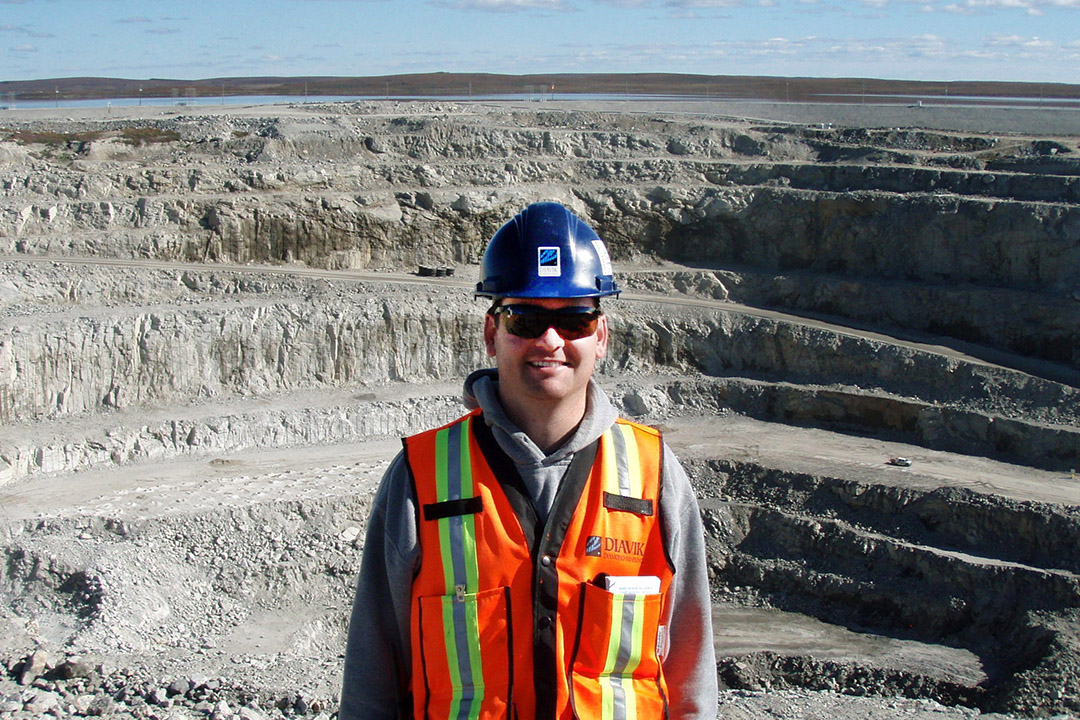
New environmental geoscience program offered at USask
The University of Saskatchewan (USask) is set to offer a new undergraduate program in environmental geoscience, effective May 2020.
By Shannon BoklaschukThe Bachelor of Science degree, taught and administered through the College of Arts and Science, will position graduates to take on a number of growing job opportunities in areas such as responsible resource extraction and environmental stewardship, said Dr. Matt Lindsay (PhD), a professor in the college’s Department of Geological Sciences.
Completing the program will also ensure graduates are eligible for registration with the Association of Professional Engineers and Geoscientists of Saskatchewan.

“There is need for this program because there is a demand for people to work in this field,” said Lindsay, who will serve as the program’s faculty advisor. “It is a growing field of practice for geoscientists.”
Geoscience is a diverse scientific field with sub-disciplines that include geochemistry, sedimentology, geomicrobiology, geophysics, mineralogy, paleontology and hydrogeology. Geoscientists integrate knowledge in these and other areas to improve understanding of the physical, chemical and biological aspects of the Earth system in the past, present and future.
The Department of Geological Sciences is already well-known for its undergraduate programs in geology, geophysics and palaeobiology. The department was one of three that initiated the previous undergraduate environmental earth sciences program, which has been replaced with a new program in hydrology that will also begin accepting students in 2020.
The program revision and renaming presented an opportunity for the department to establish a distinct undergraduate environmental geoscience program, which will focus on geochemistry and integrate other related disciplines, said Lindsay.
USask’s environmental geoscience students will participate in a new field school, starting in the 2022/2023 academic year, which help them to meet the knowledge requirements necessary for registration as professional geoscientists. The new environmental geoscience program will also represent two of USask’s signature areas of research: energy and mineral resources, and water security.
“Contamination of water resources is often the environmental issue of most importance with the energy and minerals sectors,” said Lindsay. “For example, selenium contamination of rivers in southeastern British Columbia is a direct result of coal mining operations in the region.”
Geoscience is fundamental for addressing societal needs that include meeting growing demand for non-renewable and renewable resources and minimizing the environmental impacts of resource development. This includes working with the resource sector to remediate sites impacted by mining activities as well as working with industry partners and mining companies “to be proactive in managing their activities and minimizing environmental impacts,” said Lindsay.
Canada is currently home to more than 10,000 abandoned mine sites and an even larger number of inactive oil and gas wells. Reclamation costs, which can reach into the tens of billions of dollars, are often borne by taxpayers. Graduates of USask’s environmental geoscience program will be able to assist resource companies in enhancing their environmental stewardship practices, helping to reduce the need for major cleanups.
“Better practice now will help minimize environmental impacts and increase economic benefits,” Lindsay said. “First of all, it will help reduce the environmental liabilities, which is good for the environment. Second, it will reduce the financial liabilities associated with environmental impacts—and those financial liabilities, in many cases, become the responsibility of taxpayers.”
Lindsay said many traditional geoscience jobs, particularly those in exploration and extraction, are linked to economic cycles. That means the job market for those occupations tends to change with commodity price changes. With environmental geoscience, however, employment is often more stable because the jobs are less tied to commodity prices.
“I think the overall trend will be growth,” Lindsay said.

